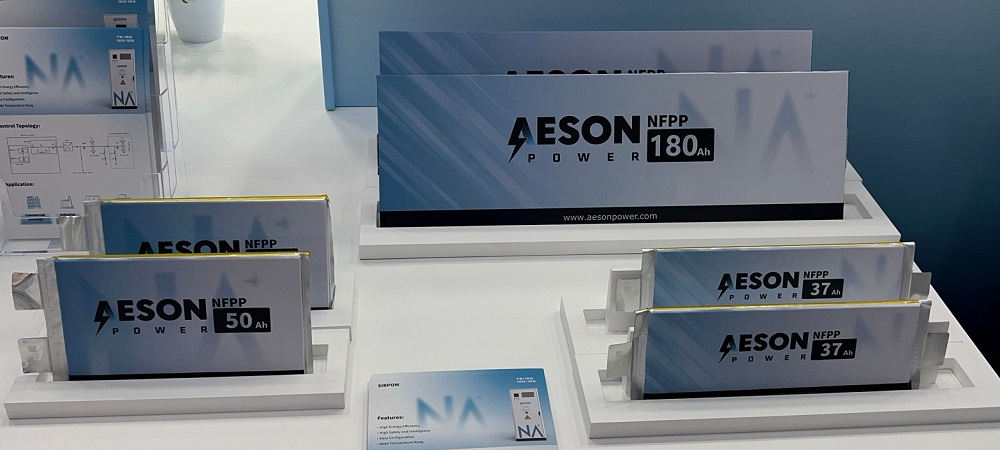The largest solar energy event of the continent now fills 18 very large rooms at the Munich fair. Intersolar predicts that more than 200,000 visitors will see the nearly 5,000 unique exhibitors showing off their hardware and services.
Breakdancing with Sungrow on the floor at Intersolar Europe 2025. The largest solar energy event of the continent now fills 18 very large rooms at the fair in Munich. Solar Promotion GmbH, the organizer of Intersolar, predicts that more than 200,000 visitors will see the nearly 5,000 unique exhibitors showing off their hardware and services.
https://www.youtube.com/watch?v=8ZBB54SMAJ4
Flexible, light and colorful solar panels are still very niche products, but they expand their product range and increase technical qualities. Euronergy showed three color groups – orange, light green and blue/dark green to their stand. The products offer efficiency ranging from 16% to just over 21%, depending on the color. The team of the stand said that there have always been installation locations that cannot take the standard weight of modules, but that aesthetics – which have always been a challenge – became a different sector to tackle. With their blue/dark green module with an efficiency of 21.17%, colored solar modules are even less efficient than advanced products-all within the reach of useful products.
Image: John Fitzgerald Weaver
The Windcube through Visala Detects local wind speeds via lasers. The unit connects to SCADA systems in the field of utilities and strives to help the installations of one axis to better protect themselves against strong wind. A single unit is generally placed on the front edge of a solar facility where prevailing winds tend to come from. In this position they can give a facility a progress of five to 10 minutes warning for potentially harmful wind, so that the tracker system can store the solar modules in a protective position.
https://www.youtube.com/watch?v=u89LDRBXRZY
The automated robot system for solar energy of Solarleano is designed to walk day or night. The standard unit is a dry cleaner designed for dry, low-humidity, regions. For non-arid regions, a second vehicle that carries water is attached to the unit, but no automated unit was mentioned. The largest unit uses a 5-meter-wide brush for installations with fixed racks and can clean up to 10 MW modules per day, while the smaller brush of 3 meters for tracking systems up to 5 MW modules per day can clean. The company plans to announce its new Cleaning System Act of Pick-Up Truck-based Cleaning System in the coming days.

Image: John Fitzgerald Weaver
CNP solutions Makes subcomponents of battery cells – in particular the binding material that is in anodes. The young company knew that the focus of the industry for safety would make it more difficult to become a supplier, so they created their own rolling machine to test the application of their products. The system of six rolls was shown and showed how their binding material could be poured into the machine and spread smoothly on the battery cell guide surface.

Image: John Fitzgerald Weaver
Aeson is the use of sodium batteries in cars and storage solutions for Gebridse Energie. The company showed its battery cells that are used or in development, ranging from 37 Ah to 180 AH. Speaking with their very optimistic technical sales representative at the stand, the company believes that can compete on sodium-based batteries-due to their inherently lower cost-in-future Lithiumion as soon as the product scales.

Image: John Fitzgerald Weaver
Unnisolar showed his balcony solar get with different innovations included. The first is that they use frameless solar panels that are attached to a polycarbonate -rider versus standard glass. Their technician said this made the modules lighter and was better able to resist wind or people who hit it. Moreover, the company offers the modules in a series of colors – golden, silvery, copper, blue and of course monocrystalline black.

Image: John Fitzgerald Weaver
Solyco Share their vertical solar panel system on the roof. The low weight, very ‘short’ system, is used on green roofs on northern widths. The vertical aspect of it ensures a higher than expected generation in northern widths. Because the height is very low – together with a very low weight – the systems can be used without ballast or mechanical roof mounts.

Image: John Fitzgerald Weaver
This content is protected by copyright and may not be reused. If you want to work with us and reuse part of our content, please contact: editors@pv-magazine.com.
Popular content


